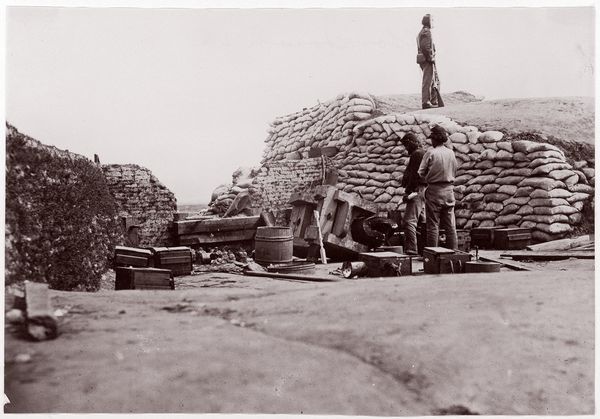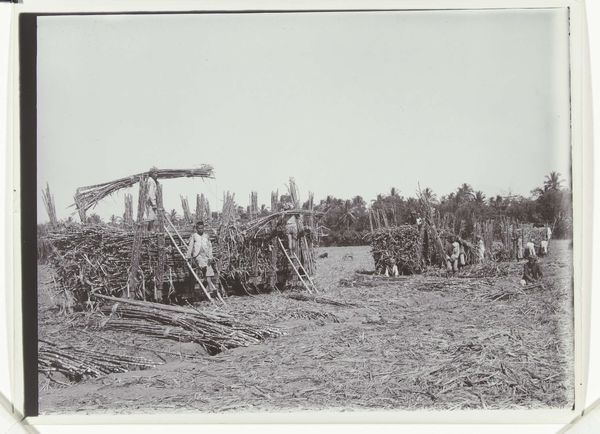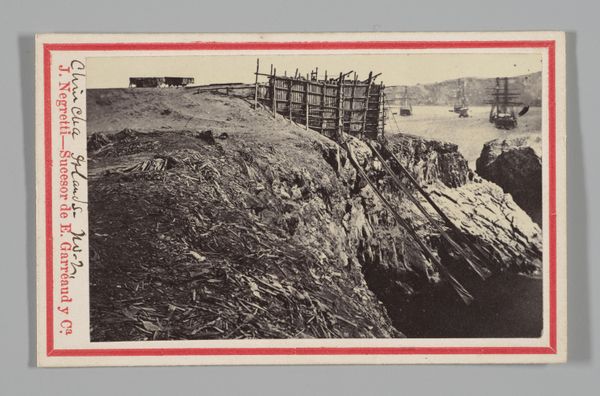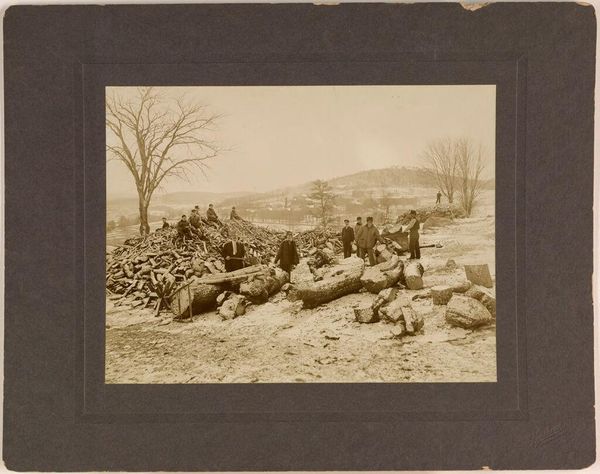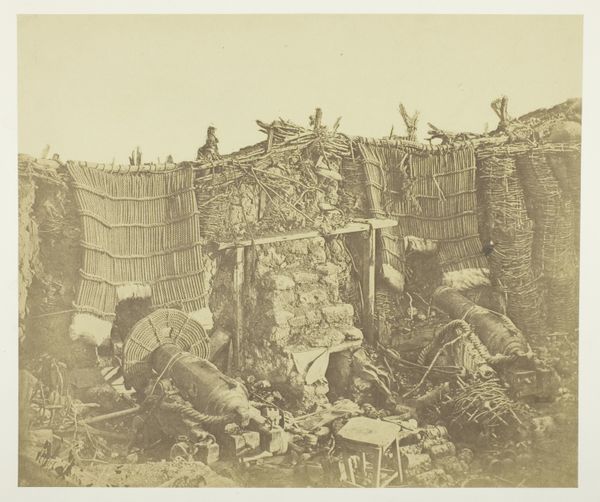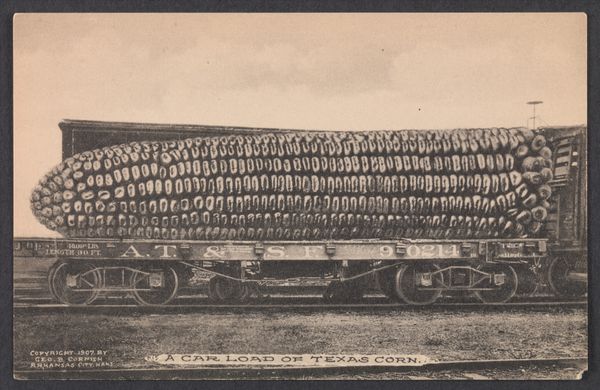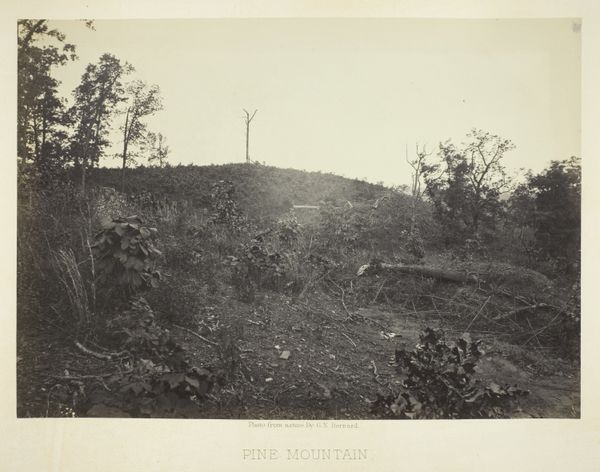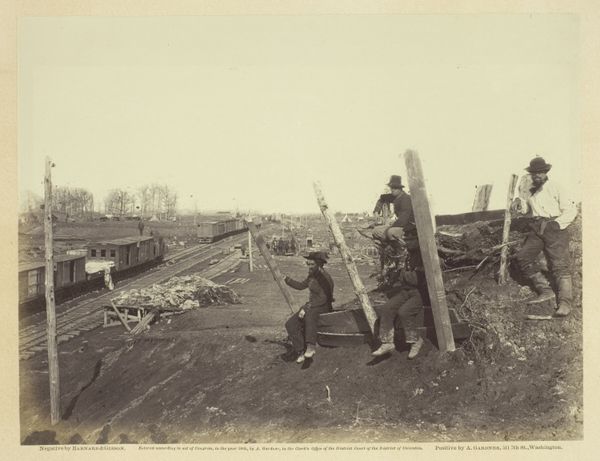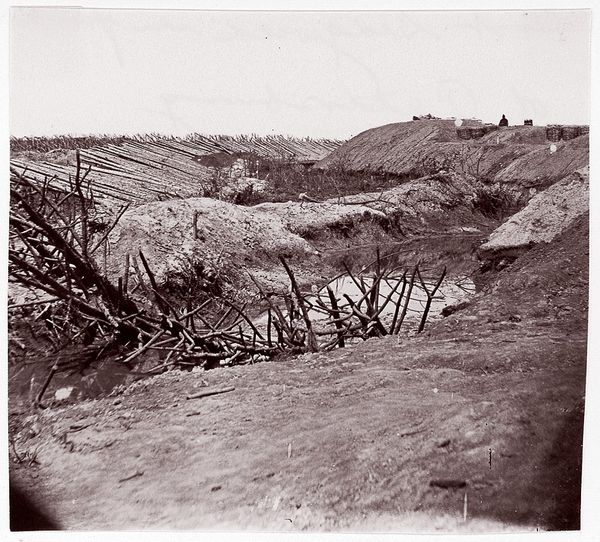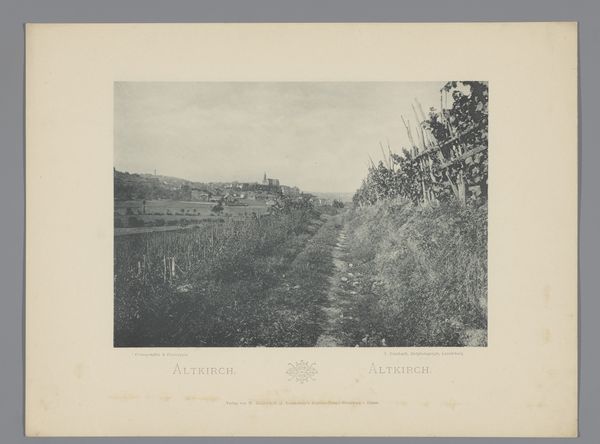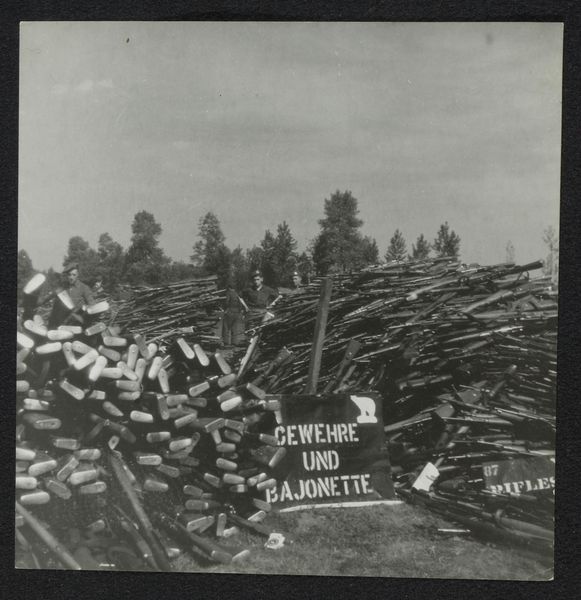
Confederate Method of Destroying Rail Roads at McCloud Mill, Virginia 1863
0:00
0:00
photography, gelatin-silver-print
#
war
#
landscape
#
photography
#
gelatin-silver-print
Dimensions: Image: 16.2 × 19.6 cm (6 3/8 × 7 11/16 in.)
Copyright: Public Domain
Editor: Here we have Andrew Joseph Russell's "Confederate Method of Destroying Rail Roads at McCloud Mill, Virginia," a gelatin-silver print from 1863. It's stark, a picture of deliberate destruction. What do you see in this photograph that speaks to the larger context of the Civil War? Curator: This image, at first glance, seems like a simple document of wartime destruction. However, it's a carefully constructed narrative. The "method" being depicted is itself a commentary. Why destroy railroads? It's about disrupting power, infrastructure, and the Union's ability to maintain its presence. It speaks to strategies of resistance rooted in a guerilla-style of engagement. It also represents destroyed economies. But what isn't seen, I think, is the legacy of enslaved labour on those same railroads. The disruption hurts everyone in the South. It highlights how desperate they were getting to keep their old way of life. Does this photograph say that the South was willing to hurt themselves to prove a point? Editor: So, beyond the immediate destruction, you're seeing a depiction of strategies that embody how deeply entrenched beliefs shape resistance and hurt even those who benefit from a destructive system? Curator: Exactly! Consider the romanticism often associated with the Confederacy, versus the stark reality of scorched earth tactics on their own soil. It's an intersection of ideology and material consequences. Russell isn't simply showing us the destruction; he's inviting us to question the cost. He's asking future generations what their complicity is in letting this ever happen again. Editor: I hadn’t considered that layer of questioning the romanticism, it shifts the whole perspective of the work. I appreciate you breaking down what may be hiding behind the "simplicity" of this picture! Curator: Likewise! It is by understanding each other's lived experience with these difficult narratives that we might collectively seek a solution that has more equitable impacts for every human.
Comments
No comments
Be the first to comment and join the conversation on the ultimate creative platform.
